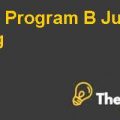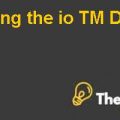
Introduction
The company was founded in Dallas, Texas, in 1927, when an employee of the Southland Ice Company, Joe C. Thompson started selling milk, eggs and bread from an ice house. The Company began to use 7-Eleven’s name, when all stores were open from 7am to 11am. Jim Keyes, was the CEO and president of 7-eleven. In 2003, SEI was considered to be the largest convenience store chain in highly competitive U.S market. In 2002, the revenue generated by the company was estimated to be $10.1 billion in revenue from its merchandise and gasoline. It was having 5327 convenience stores in U.S and 496 in Canada. The stores were located in 31 states and the District of Colombia and five Canadian provinces. The Gross profit for the company was estimated to be $2.8 billion and the gross profit margin was estimated to be 34.7%, through merchandise sales.
Question 1
There are many differences between Japan and U.S that makes the Japanese 7-eleven experience misleading for the U.S. The major difference between Japan and U.S is that the eating habits in the U.S are totally different from that in Japan. It can be elaborated more clearly by discussing the eating habits and other factors of both the countries and highlighting the points which are the main cause of difference between both the countries.
Situation of Japan
In Japan, food is considered to be the most important element in reflecting the culture of Japan. Japanese cuisines are very famous for their creativity, energy, freshness and toughness worldwide. When Seven-Eleven started its operations in Japan, Suzuki, President of SEJ, had a strategy of selling the fresh food through Seven-Eleven stores, since Japanese are considered to be health conscious. So, it was proved to be a successful strategy and this gave SEJ a boost in their performance and sales. It was observed that freshly prepared foods were mostly preferred by the customers and it was a source of high profits for the Seven-Eleven.The traditional food items from Japan included the fresh foods like rice, vegetables, fish or meat and salads. Therefore, these items were included in the menus presented at Seven-Eleven stores.
The major advantage for SEJ was that there was a new trend seen in the Japanese culture, that people were more engaged in the practice of going out for eating. Due to less cooking at home, they preferred going to the convenient stores for purchasing the food. The number of women started doing jobs so they preferred buying food from the convenience stores such as Seven-Eleven for their families. As Japanese are fond of having dinner with their families so that was the key factor in the success of the fresh food campaign by Suzuki. Moreover, another important factor in the success of fresh food strategy was the distribution. SEJ was having a very efficient distribution system and due to increased number of Seven-Eleven stores, the suppliers had to cover short distances for supplying the fresh foods and hence, SEJ did not have to compromise on the freshness of the food.
Situation of U.S
In U.S the situation was quite different from that in Japan. Most importantly, the eating habit in the U.S was quite different from Japan. Americans were quite different from the Japanese when it came to food. Americans were fond of eating fast food and other junk foods. They had the high privilege for the numerous fast food chains operating in America. The Americans were not very health conscious when it came to food. Americans were also fond of eating and not cooking at home, but they did not have chose the convenient stores for purchasing the food instead they chose fast food restaurants. Americans were not quite family oriented like the Japanese, they used to dine in the restaurants rather than taking food home. Whereas, if the strategy of SEJ would have been followed then there was only take away option given by Seven-Eleven store.
Another key difference between operating in U.S and Japan was the distribution system. If U.S followed the same strategy of distributing the fresh foods in no time, then they would have struggled as the suppliers had to cover long distances for supplying food in U.S..........................
This is just a sample partial case solution. Please place the order on the website to order your own originally done case solution.
Can 7-Eleven United States to repeat the successful experience of 7-Eleven Japan in the sale of fresh products in stores? Describes the Japanese system and shows the company is taking steps to try to achieve the same success in the United States. "Hide
by David E. Bell, Hal Hogan Source: Harvard Business School 30 pages. Publication Date: December 4, 2003. Prod. #: 504057-PDF-ENG












